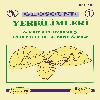Mechanisms of gangue transfer into flotation concentrates and their effects of flotation performance
Bu çalışmada, flotasyon köpüklerine gang taşınmasının temel mekanizması olan mekanik taşımanın flotasyon performansı üzerine etkileri ve mekanik taşıma miktarına etkileyen faktörler araştırılmıştır. Serbestlenme boyutu -0.075 mm olan bir sfalerit cevher örneği kullanılarak seri flotasyon deneyleri yapılmıştır. Bu deneylerde mekanik taşıma miktarını etkileyen beslemedeki şlam miktarı, palp yoğunluğu veya viskozitesi, köpük yüksekliği ve hava akış hızı gibi parametrelerin konsantre kalitesine etkileri belirlenmiştir. Bu deneylerde ayrıca, konsantreye taşınan su miktarı ve gang miktarı da ölçülmüştür. Elde edilen bütün deneysel veriler değerlendirildiğinde, gang kazammının su hazmımı ile orantılı olduğu, literatürde de belirtildiği gibi, belirlenmiştir. Ancak, aynı miktarda su elde edilen bir çok flotasyon deneylerinde, belirlenen mekanik taşınan gang miktarları birbirinden farklı olabilmektedir. Bu, mekanik taşımayı yalnızca su verimi ile ilişkilendirmenin . yeterli olmıyacağını göstermiştir. Bu sebeble, gang ve su kazammlarını ilişkilendirmek için çok değişkenli ampirik bir tahmin modeli oluşturulmuş ve deneysel verilerle modelden hesaplanan veriler arasında iyi bir uyum olduğu belirlenmiştir
Flotasyon konsantrelerine gang transfer mekanizmaları ve flotasyon performansına etkileri
In this study, the factors affecting mechanical entrainment which is main mechanism of gangue transfer into the froths and their effects on flotation performance were investigated. A series of flotation tests were canned out by using a sphalerite ore sample and its liberation size was determined to be -0.075 mm. In these tests, the effects of the waterrecovery and mechanical entraintment, which are controlled by some parameters such as slime content of feed, pulp density or viscosity, froth height and aeration rate, on the guality of concentrates were investigated. In addition, amounts of water and gangue recorvered in the concentrate are determined in each test. Evaluation of the all data obtained from the tests showed that amount of gangue recovered in the concentrate is proportional to water recovered in the concentrate. But, for example, if flotation tests were performed at different pulp densities or aeration rates, the amount of gangue entrained in the concentrate can differ for the same values of the water recovery but also other parameters affecting the water recovery. It was determined that there was good agreement between the observed results and the estimated results from the model.
